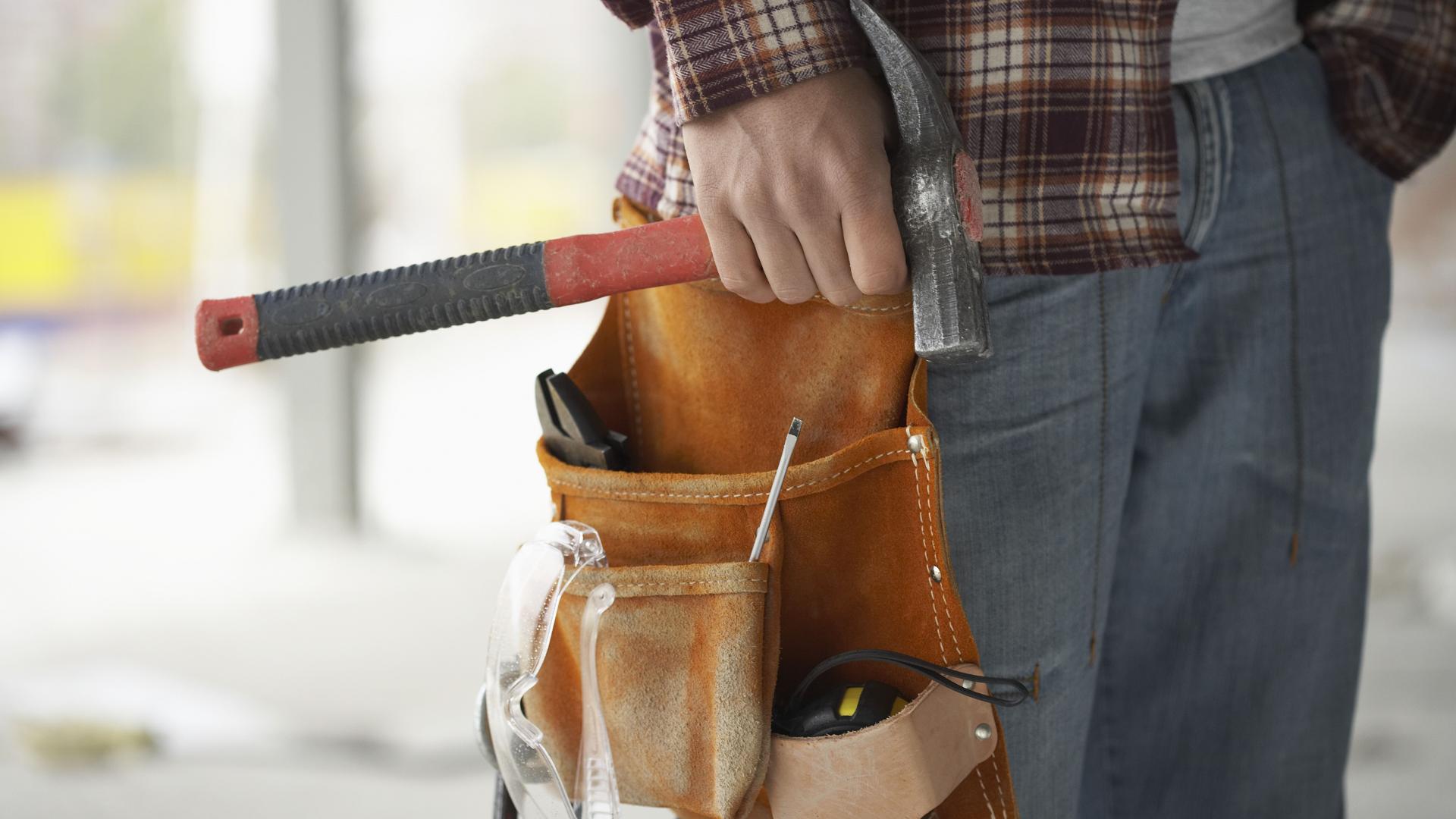Have you ever experienced the frustration of needing to load something into your shed and realizing that it can’t easily be done without a ramp to the elevated doorway? If so, you’d better keep reading. Below, we’ve outlined a simple, practical guide on how to build a ramp for your shed. Eliminate the chance of a future problem, and have a ramp for your shed sooner rather than later!
Materials Needed for Building a Shed Ramp
Here are the basic materials you’ll need to get started:
- Four 2 x 8 treated plywood boards
- One 2 x 12 treated plywood board
- Hammer
- Tape measure
- Screws (3” flat head wood deck screws)
- Power drill
- Saw
- Sandpaper (optional)
Step #1: Cut the Lumber
Once you’ve gathered all the necessary materials, start off by cutting the 2 x 12 board in half diagonally from corner to corner. You should end up with two narrow triangles: the stringers. Before moving to the next step, make sure that the stringers are even and the same size. Next, cut the 2 x 8 boards in half lengthwise using a saw so you end up with eight 2 x 4 boards.
Next, you need to pre-drill the 2 x 4 boards for the screws. Drill two holes on each end of the board. There will be a total of four holes on each board.
Step #2: Screw Boards to the Stringers
Starting at the top of the stringers, place one 2 x 4 onto the stringer. Make sure it’s right on the edges. Put the screws into the 2 x 4, and screw the 2 x 4 into the stringer using a power drill. Repeat this process until you reach the bottom of the ramp.
Step #3: Trim Off Excess Wood and Finish
Lastly, use a saw or power saw to trim any excess wood off of the stringers. It’s important that the edges of your ramp are clean and crisp, not rough and jagged. While not necessary, you can also sand the ramp so it’s smoother and looks more finished.
Ramp Building Tips
- It’s in your best interest to use high quality materials for building your shed ramp, like pressure-treated or rot-resistant wood. Spending the extra money for better, more durable supplies will definitely pay off in the long run.
- Depending on how high off the ground your shed’s doorway is, you may need to use a longer (or shorter) stringer. This particular ramp is a little over 1 foot from top to bottom. If your shed is lower to the ground, consider using a smaller stringer, such as a 2 x 10 instead of a 2 x 12. If you don’t want to use a shorter stringer, you’ll need to dig your ramp into the ground so it is flush with the shed door.
- As time goes on and your ramp experiences general wear and tear, it’s possible for it to become elusive and slick. There are several types of coarse, non-skid paint you can apply to your ramp to avoid this, which can be purchased at most home improvement stores.
- If your ramp needs to withstand more weight, it may be a good idea to add a third stringer of the same size in the center of your ramp. You can attach the boards to the third stringer in the same way that you did the first two.
Benefits of Shed Ramps
First and foremost, having a shed ramp dramatically reduces the risk of accidents. A ramp makes it much easier to load heavy equipment in and out of your shed without straining your body.
Not only that, but shed ramps also prevent additional wear and tear on equipment, which will save you money in the long run. However, while building a ramp for your shed is relatively simple, it’s not always quick.
If you’re looking to save some time, but still need a ramp, you can always buy a pre-made shed ramp instead. They’re inexpensive, and adaptable for sheds of all sizes. Contact us if you have any questions, or need any help with your storage needs!

